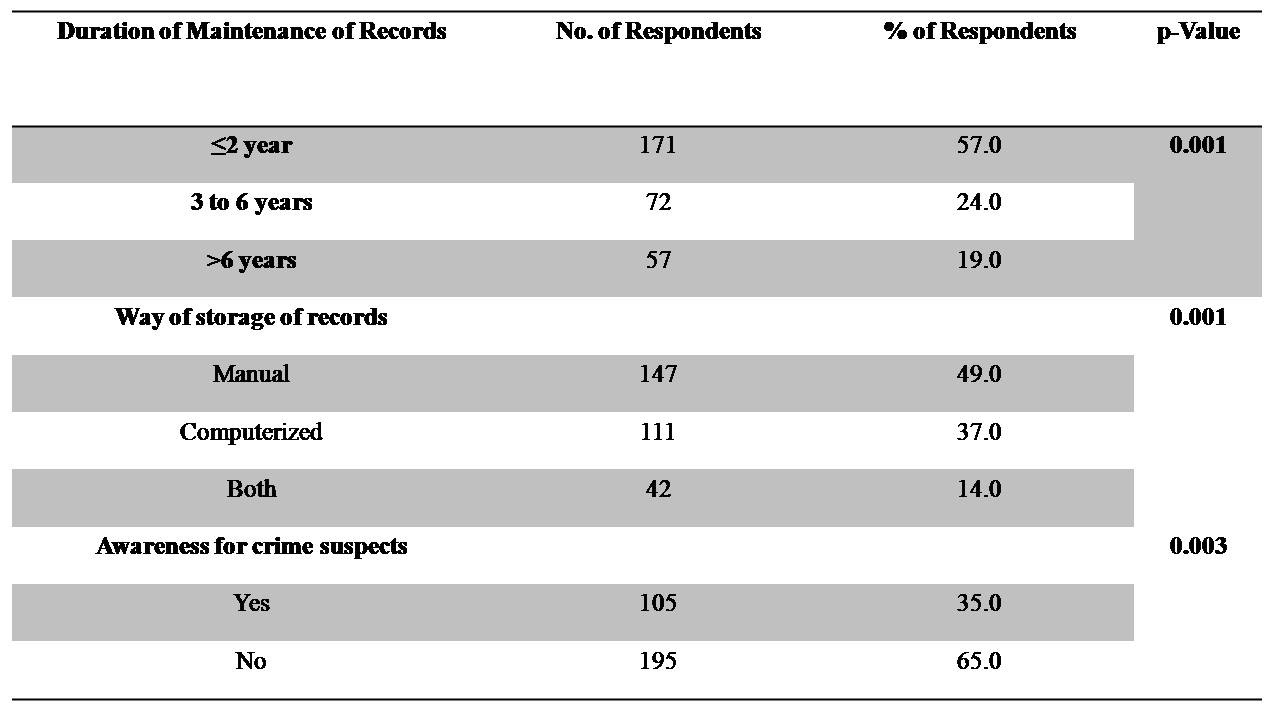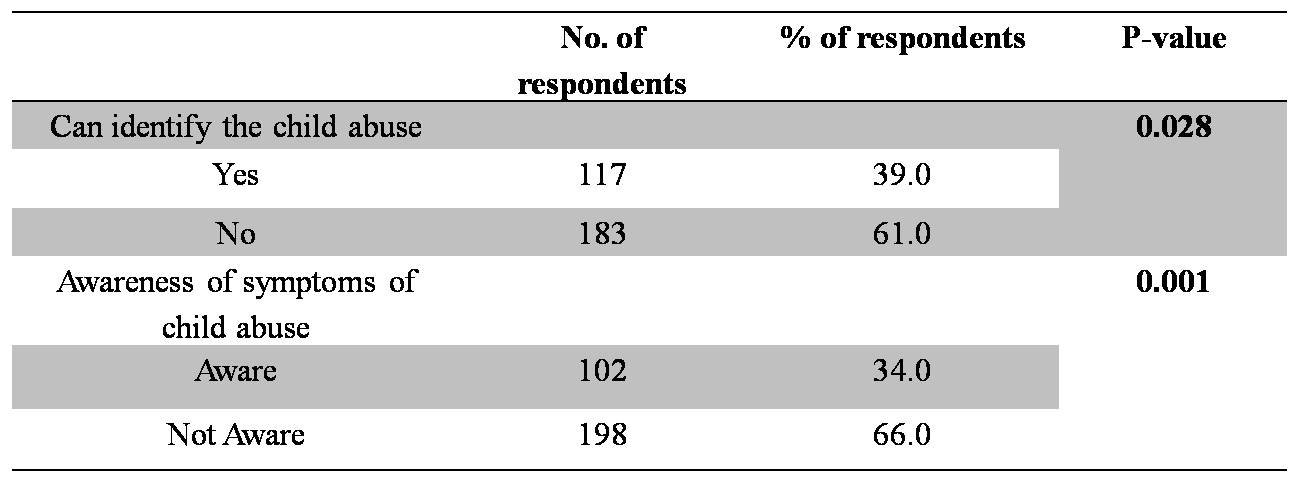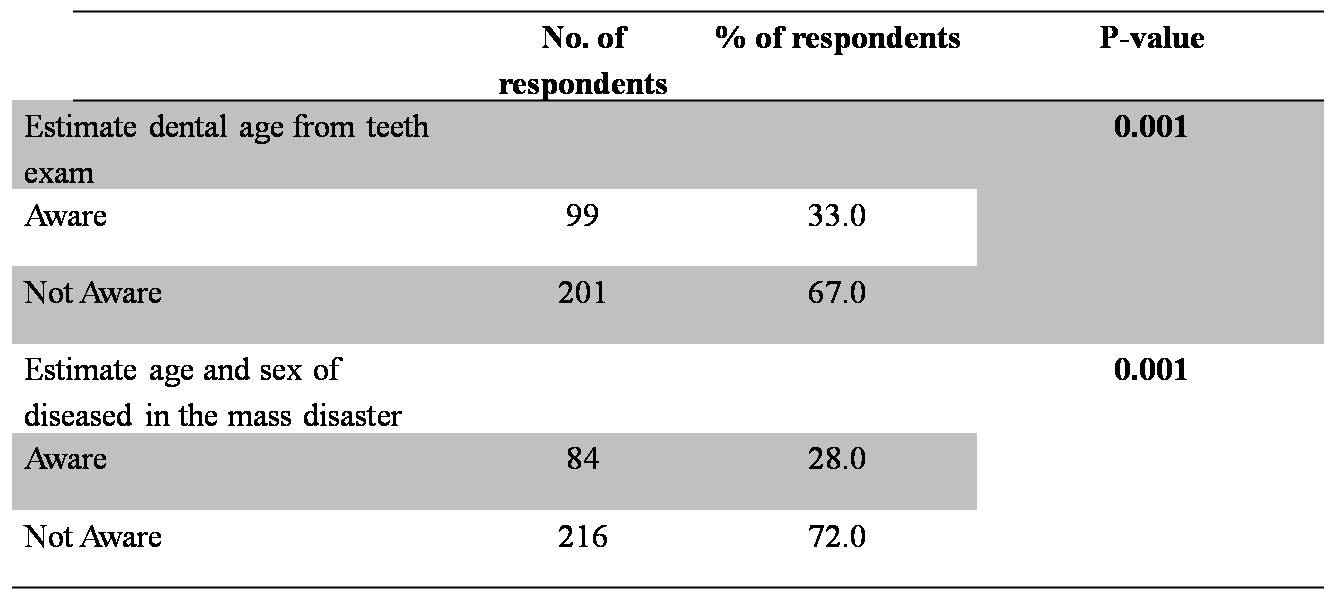Categories
Volume 2 Issue 3 (July-September, 2014)
Original Articles
| AWARENESS OF FORENSIC ODONTOLOGY AMONG GENERAL DENTAL PRACTITIONERS IN PUNE - A CROSS-SECTIONAL STUDY | |
| Namrata Harchandani, Swati Marathe, Manjula Hebbale, Shams Ul Nisa, Darshan Hiremutt | |
   |
Year: 2014 // Volume: 2/ / Issue: 3/ / Page: 10-16
Department of Oral Medicine and Radiology, Bharati Vidyapeeth Deemed University Dental College and Hospital, Pune. Corresponding Author: Dr. Namrata Harchandani, E mail: suhanarochani@gmail.com This article may be cited as: Harchandani N, Marathe S, Hebbale M, Ul Nisa S, Hiremutt D. Awareness of Forensic Odontology among General Dental Practitioners in Pune - A Cross-sectional Study. J Adv Med Dent Scie Res 2014;2(3):10-16. Aim and Objective: The aim of the study is to analyze the knowledge, attitude and approach of forensic odontology among dental practitioners in Pune. Materials and Methods: A cross-sectional study was conducted in a sample of 300 dental practitioners in Pune and data was collected by means of a questionnaire. The questionnaire consists of 13 relevant questions with demographic and clinical data was recorded. Results: Thirty % of the dental practitioners did not maintain dental records in their clinic/workplace and out of the70 % that maintained records, Fifty seven %of dental practitioners were maintaining dental records for less than equal to two years and twenty four percent maintaining dental records for about three to six years. Nineteen % of dental practitioners were maintaining dental records for more than six years. Fifty seven % of dental practitioners used hand written records and twenty four percent keep their records in computer whereas nineteen % maintain them in both formats. Sixty one % of the dental practitioners were not aware of child abuse and the actions to be taken. Dental age and gender estimation was not known to 72% of the dental practitioners. Accuracy and sensitivity in identifying an individual by DNA was know to 65%, whereas 5 % of dental practitioners were in favor of visual examination. About 72% of the dental practitioners did not know the significance of bite mark patterns of the teeth. 65 % of the practitioners don’t know that they can testify as an expert witness in court of law while 83 % of the practitioners lacked formal training in collecting, evaluating and presenting dental evidence. Conclusion: Our study revealed inadequate knowledge, poor attitude and lack of practice pertaining to record keeping or clinical knowledge of forensic odontology prevailing among the dental practitioners in Pune. |
| Abstract View | Download PDF | Current Issue | |




